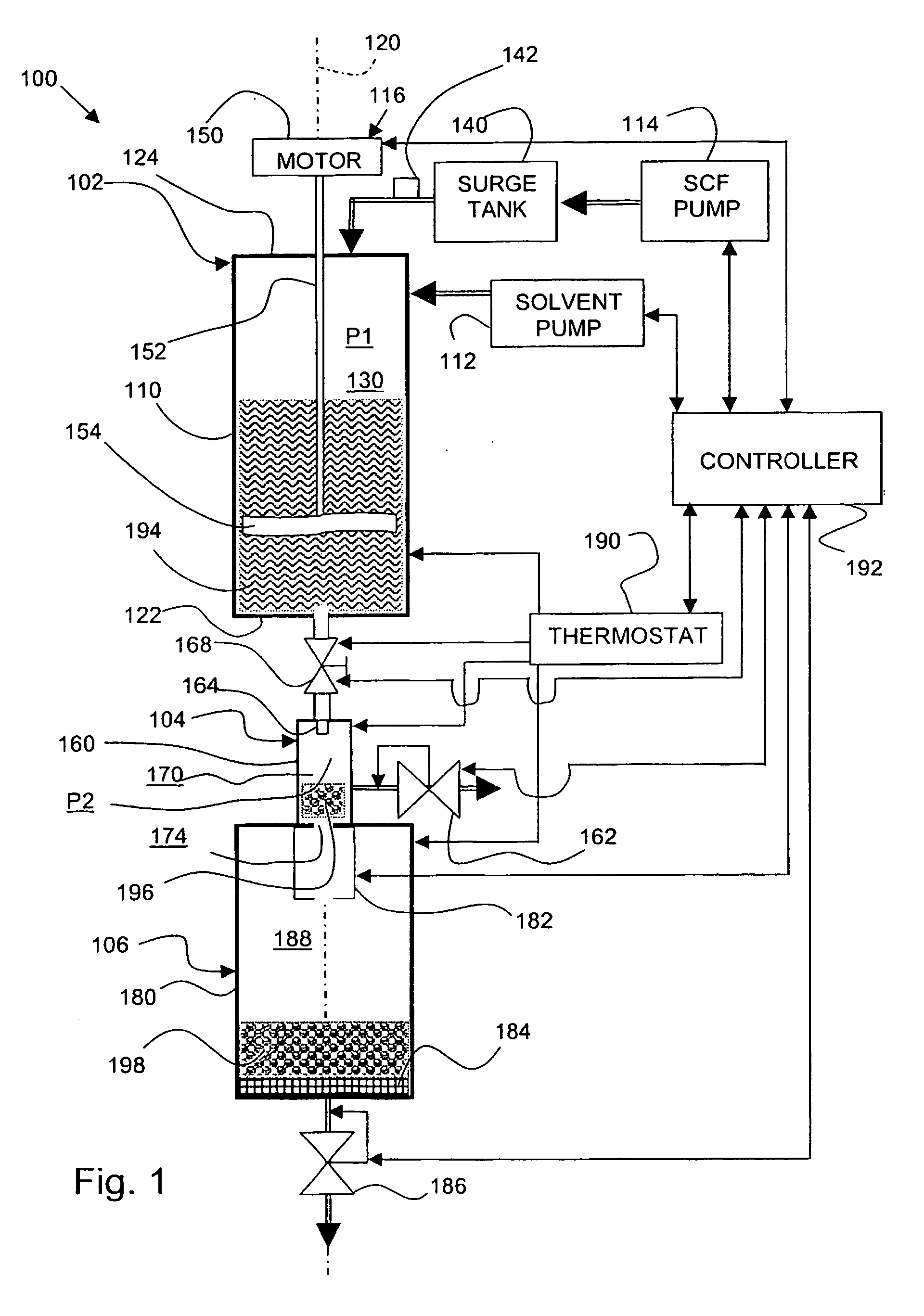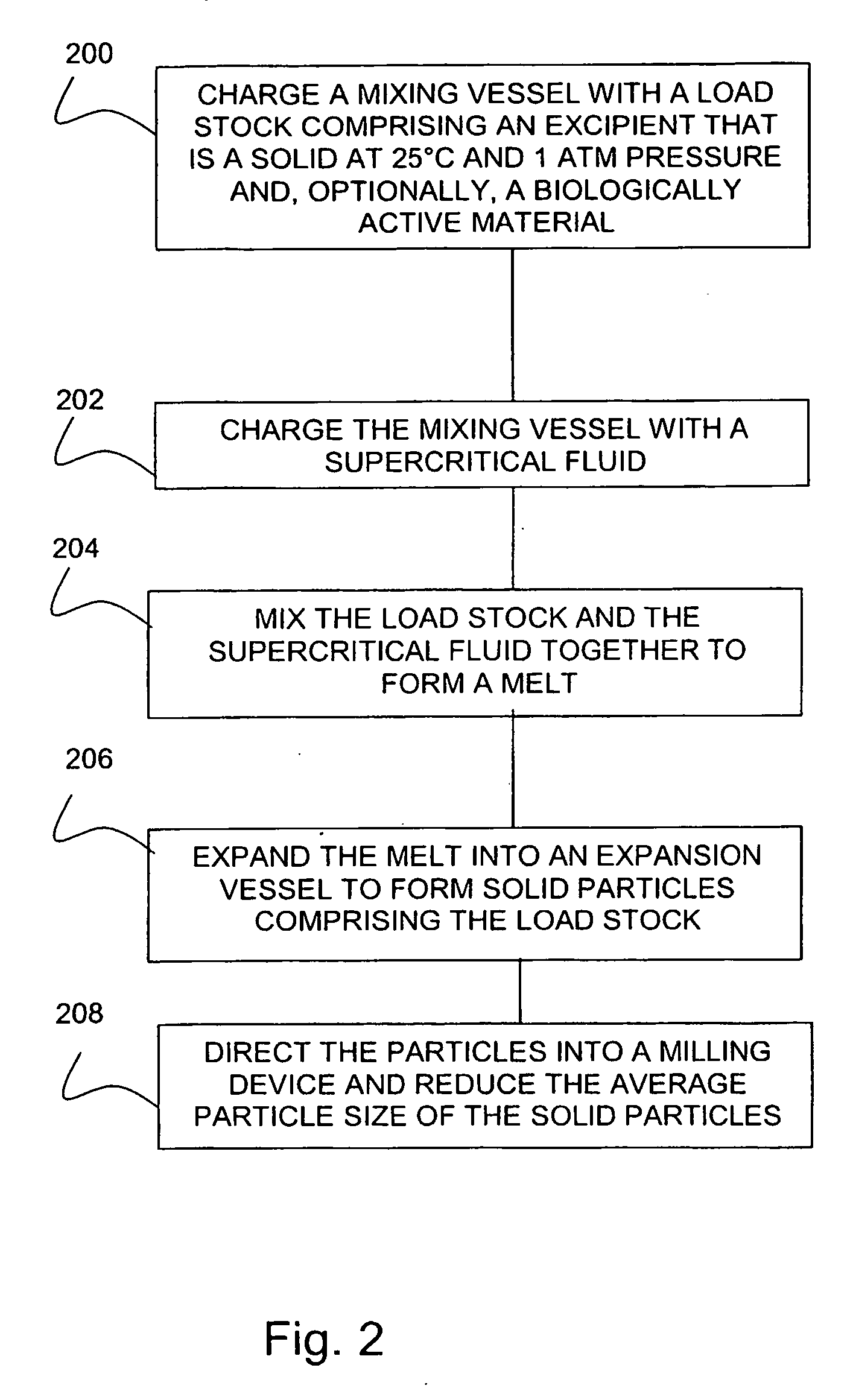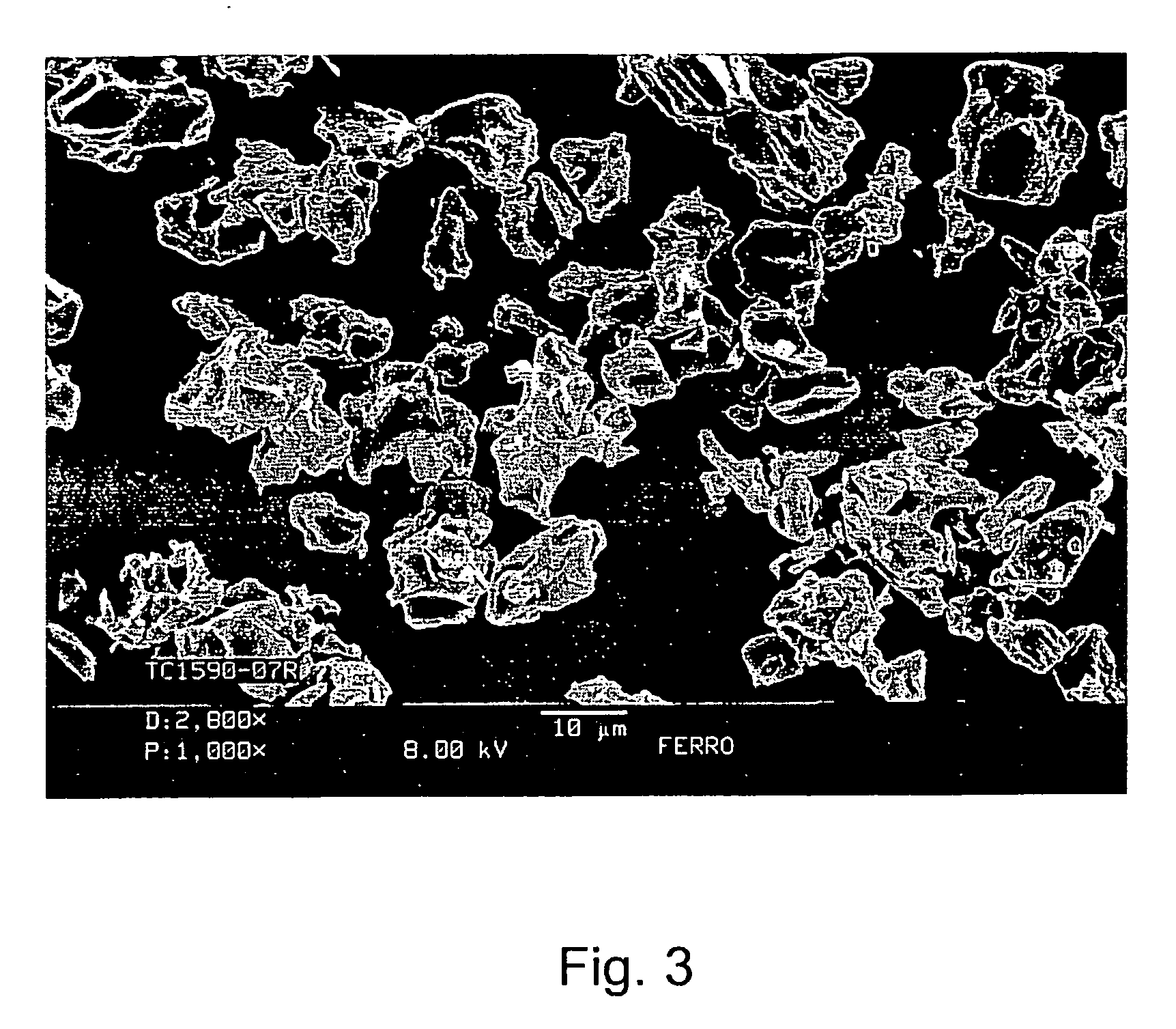Method and apparatus for enhanced size reduction of particles
a particle and enhanced technology, applied in the field of methods and apparatus for producing particles, can solve the problems of thermal fracture of solidified particles into smaller particles, and achieve the effect of rapid temperature reduction and high viscosity
- Summary
- Abstract
- Description
- Claims
- Application Information
AI Technical Summary
Benefits of technology
Problems solved by technology
Method used
Image
Examples
example 1
[0049] Preparation.
[0050] Initially, 5 grams (g) of EUDRAGET RS100 and 1.6 g acetaminophen (paracetamol) were dissolved into 15 milliliters (ml) of acetone. The solution was charged to a mixing vessel. The mixing vessel defined a chamber having a volume of 100 ml and had a diameter of 32 millimeters (mm). The chamber was pressurized with carbon dioxide gas (CO2) to an operating pressure of 30 megaPascal (MPa), and heated to a temperature of 323 Kelvin (K).
[0051] At the predetermined temperature and pressure, the carbon dioxide became supercritical. The controller was set to maintain the mixer to rotate the mixer blade at a constant agitation speed of 4000 revolutions per minute (rpm). The ingredients were mixed for 30 minutes.
[0052] Carbon dioxide was circulated through the mixing vessel during the mixing stage. The circulating carbon dioxide removed the acetone from the solution, thus forming a residual homogeneous mass or melt of acetaminophen crystals and EUDRAGIT carrier.
[00...
example 2
[0059] Preparation.
[0060] Initially, 10 grams (g) of Polyester was loaded into the mixing vessel described in Example 1. The vessel was pressurized with carbon dioxide gas (CO2) to an operating pressure of 30 megaPascal (MPa), and heated to a temperature of 333 (K). The controller was set to maintain the mixer to rotate the mixer blade at a constant agitation speed of 2000 revolutions per minute (rpm). The polymer was mixed for 30 minutes.
[0061] Expansion.
[0062] A release valve was opened at the top of the mixing vessel to reduce the pressure of the mixture from 30 MPa to 1 bar for about 10 s. The expansion caused both a pressure reduction and a temperature reduction. The melt formed a porous mass of polymer and dry ice.
[0063] The resulting porous solid was collected and directed into a rotary grinder operating at a speed of 10,000 revolutions per minute (RPM). For comparison, solid untreated polymer in the form of flakes (between 1-2 mm size) was mixed with dry ice and subjecte...
PUM
| Property | Measurement | Unit |
|---|---|---|
| pressure | aaaaa | aaaaa |
| temperature | aaaaa | aaaaa |
| particle size | aaaaa | aaaaa |
Abstract
Description
Claims
Application Information
 Login to View More
Login to View More - R&D
- Intellectual Property
- Life Sciences
- Materials
- Tech Scout
- Unparalleled Data Quality
- Higher Quality Content
- 60% Fewer Hallucinations
Browse by: Latest US Patents, China's latest patents, Technical Efficacy Thesaurus, Application Domain, Technology Topic, Popular Technical Reports.
© 2025 PatSnap. All rights reserved.Legal|Privacy policy|Modern Slavery Act Transparency Statement|Sitemap|About US| Contact US: help@patsnap.com



